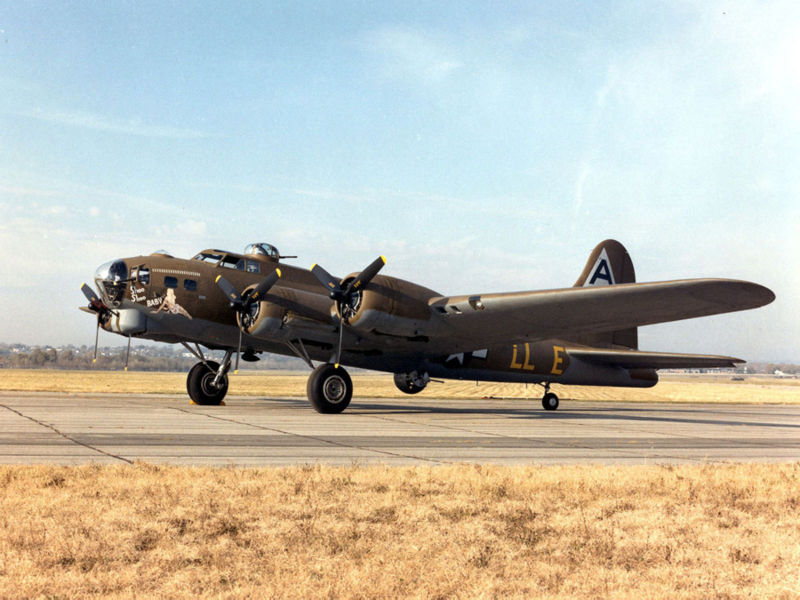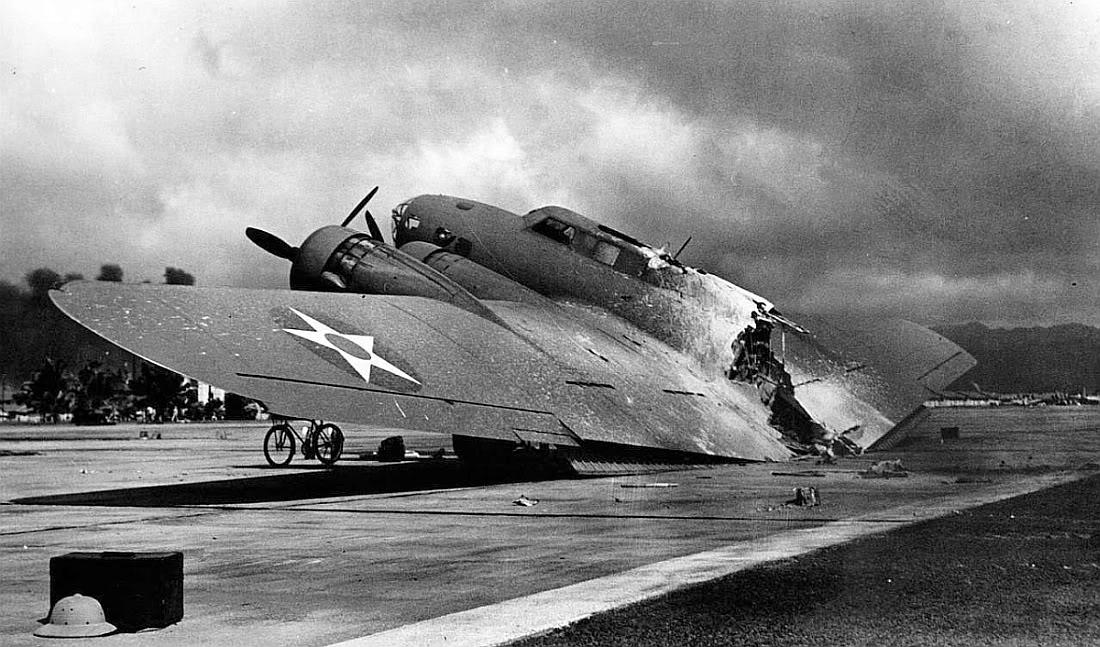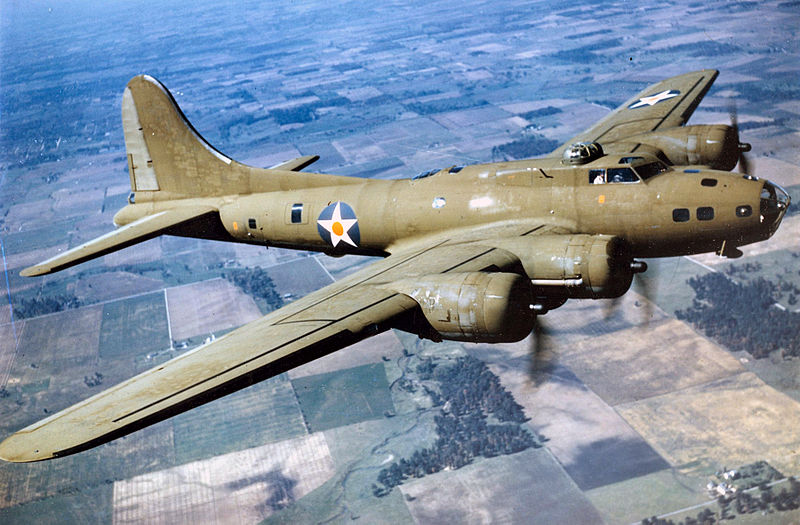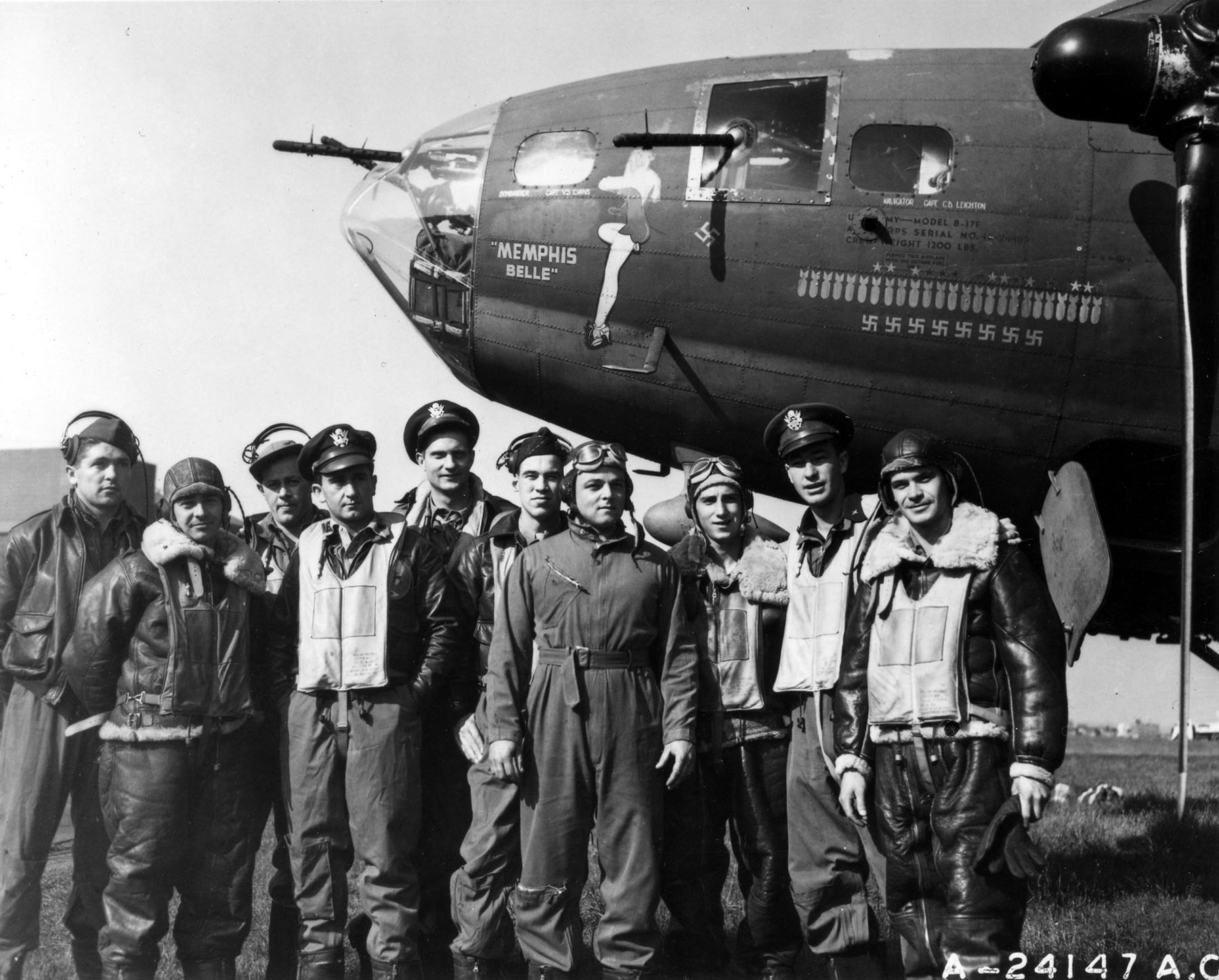The B-17 Flying Fortress, Part 1

B-17G Flying Fortress Shoo Shoo Baby of the 91st Bomb Group (USAF Museum)
Few World War II airplanes have captured the imagination like the Boeing B-17 Flying Fortress.
Next Monday, May 2, I’ll have the privilege in taking a flight in Aluminum Overcast, the restored B-17 owned by the Experimental Aircraft Association. Over the next three weeks, I’ll run a three-part series on the legendary Flying Fortress – a starring side character in my novels. Today I’ll talk about the plane, next week about the crew, and the following week I’ll share photos and video from my flight.
Development
In 1935, the US Army called for a multi-engine, long-range, high-altitude heavy bomber. On July 17, 1935, Boeing introduced Model 299, which made its maiden flight on July 28, exceeding Army specifications. With plenty of machine guns, it was dubbed the “Flying Fortress” by a reporter. Although Model 299 crashed on an early flight, Boeing received a contract to develop the YB-17 in 1936.

Wreck of B-17C bomber at Hickam Field, Territory of Hawaii, 7 Dec 1941 (US National Archives)
Improvements were made with each successive model – the B-17B in October 1939, the B-17C in July 1940, and the B-17D in February 1941. The C and D models were involved in America’s entry into World War II – shot up on the ground in Hawaii and the Philippines and flying early bombing missions. Since a squadron of twelve B-17Ds was expected in Pearl Harbor early on December 7, 1941, when radar showed the approaching Japanese planes, the officer in charge dismissed the warning. Read the story here.
Combat Models
The B-17E rolled out in September 1941, the first model to sport the distinctive bell-shaped vertical stabilizer (tail fin). This model was used in the Eighth Air Force’s first combat missions over Nazi-occupied Europe in late 1942. Further refinements led to the F model in August 1942. One of the most famous B-17Fs was the Memphis Belle, the first plane and crew to finish 25 missions in Europe.

Boeing B-17E in flight, 1942. (U.S. Air Force photo)
Since no one expected dangerous head-on fighter attacks, the F model had weaker .30 caliber guns in the nose rather than the .50 caliber guns used in the rest of the plane. In addition, the nose guns could not be trained to twelve o’clock. The Luftwaffe quickly discovered this deficiency and adopted head-on attacks with devastating results to the Eighth Air Force. Desperation and ingenuity led airmen to shatter holes in the nose of the plane and suspend a .50 caliber gun with racks and retractable cords. Later B-17Fs incorporated a factory-installed .50 caliber nose gun and eventually a chin turret with two .50 caliber guns.

B-17 Memphis Belle and her crew, May 1943 (USAF Photo)
The last and most common model, the B-17G, entered combat in September 1943, but further refinements were made throughout the war.
Specifications
With a wing span of 103 feet and a length of 74 feet, the B-17G cut a graceful figure. Powered by four Wright R-1820 Cyclone engines, it could carry a crew of ten and a bomb load of up to 8000 pounds (but less on long-distance missions). The B-17G had a top speed of 302 mph and a ceiling of 36,400 feet. Depending on the model and theater of operations, B-17s carried ten to thirteen machine guns.
The B-17 was the first plane to use turbo-superchargers, which boosted engine performance at high altitude. The plane also featured the Norden bombsight, a complicated piece of machinery that allowed the bombardier to compensate for airspeed, wind speed, and drift when bombing. Purported to drop a bomb in a pickle-barrel, the Norden never reached that accuracy in combat, but did allow successful high-altitude, daylight strategic bombing.


After reading A Distant Melody I have to admit to really being interested in, and loving B-17s! LoL. Hope you enjoy Monday’s flight! Can’t wait to hear about it!! =]
Hugs!
Thanks, Patty! I’m really getting excited about it 🙂
That flak picture is my grandfather’s plane, lady be good